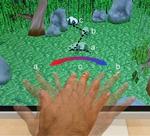Other

“HZDR researchers use sensors to give humans magnetoception While birds are able to naturally perceive the Earth’s magnetic field and use it for orientation, humans have so far not come close to replicate this feat – at least, until now …

“As a result of climate change, population growth and rising expectations regarding quality of life, energy requirements for cooling processes are growing much faster worldwide than for heating. Another problem that besets today’s refrigeration systems is that most coolants …
News Graphene enables clock rates in the terahertz range: researchers pave the way for nanoelectronics of the future

“Graphene – an ultrathin material consisting of a single layer of interlinked carbon atoms – is considered a promising candidate for the nanoelectronics of the future. In theory, it should allow clock rates up to a thousand times faster than today’s …
“The recent success of Pokémon GO made many people very familiar with the concept of “augmented reality”: computer-generated perception blends into the real and virtual worlds. So far, these apps have largely used optical methods for motion detection. Physicists at …

“Conventional electron accelerators have become an indispensable tool in modern research. The extremely bright radiation generated by synchrotrons, or free electron lasers, provides us with unique insights into matter at the atomic level. But even the smallest versions of these …

“Tinier than the AIDS virus - that is currently the circumference of the smallest transistors. The industry has shrunk the central elements of their computer chips to fourteen nanometers in the last sixty years. Conventional methods, however, are hitting physical boundaries …

“Scientists at the Helmholtz-Zentrum Dresden-Rossendorf (HZDR), working with colleagues from the USA and Germany, have developed a new optical detector from graphene which reacts very rapidly to incident light of all different wavelengths and even works at room temperature. It …

“A material with superfast electrons that exhibits extremely large magnetoresistance may be suitable for use in electronic components. It may be significantly easier to design electronic components in future. Scientists at the Max Planck Institute for Chemical Physics of Solids …
